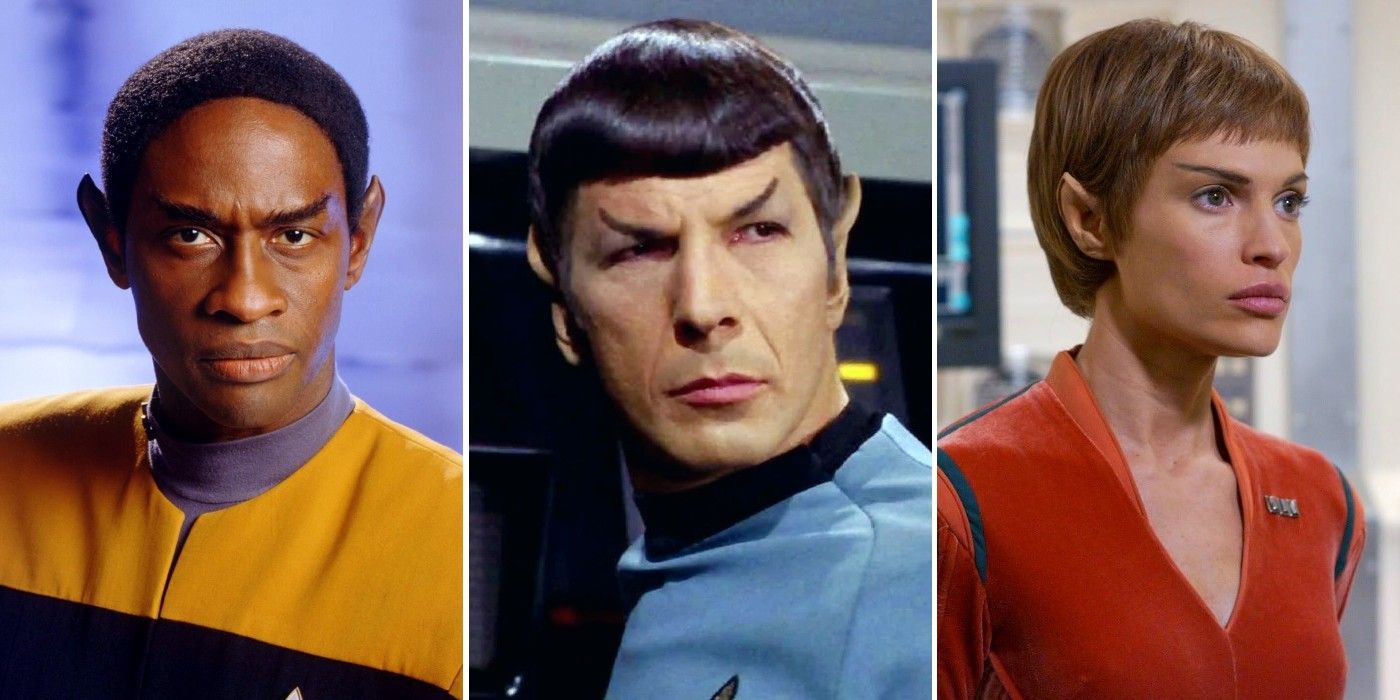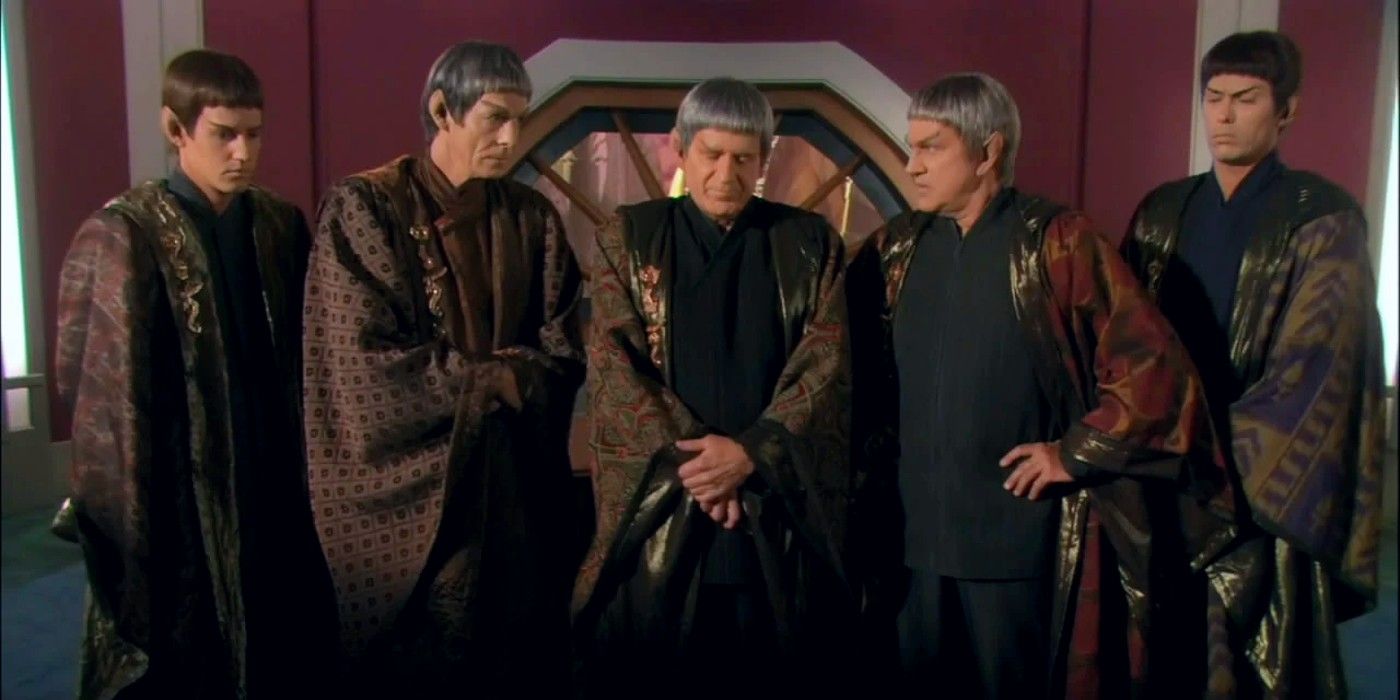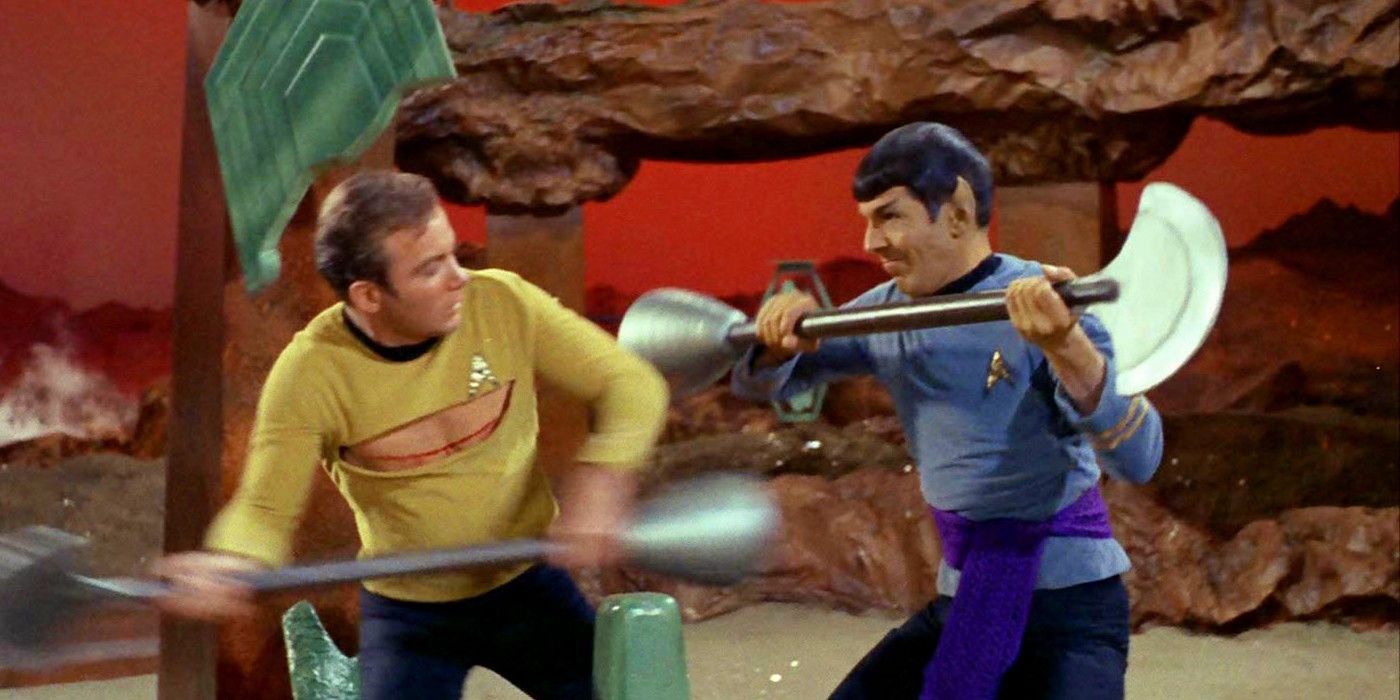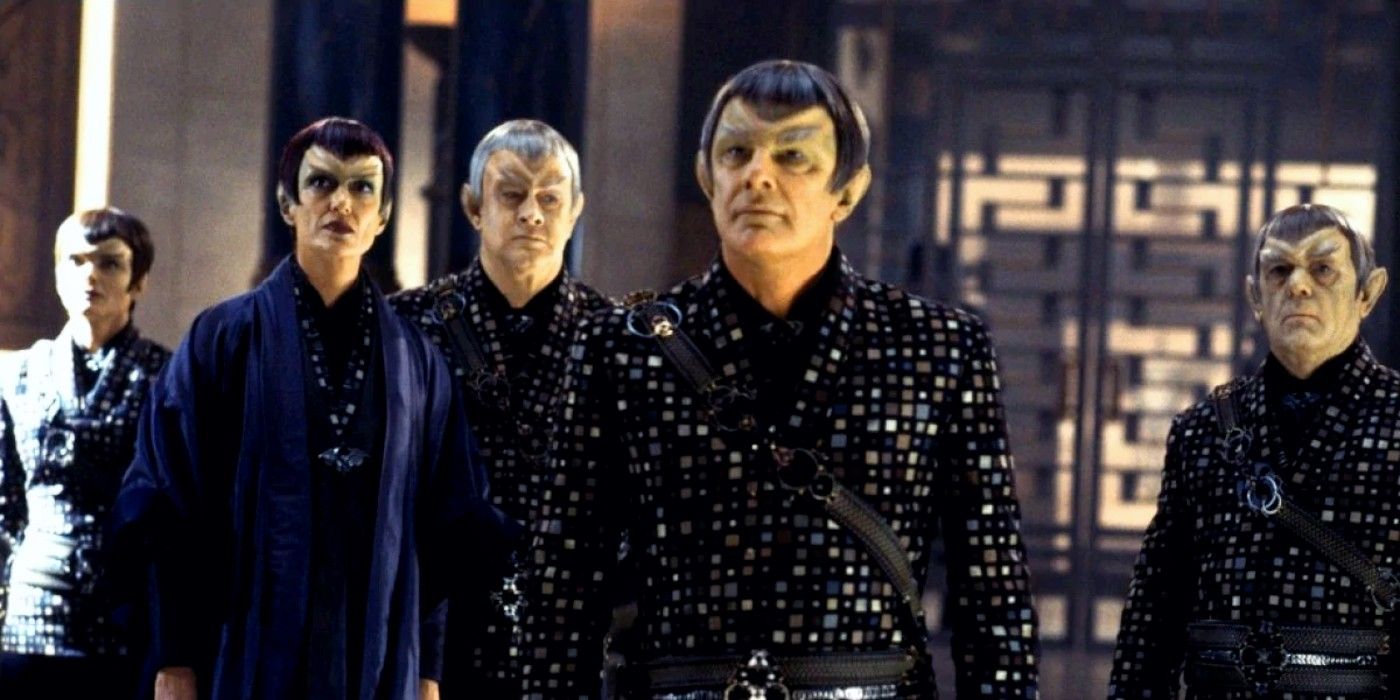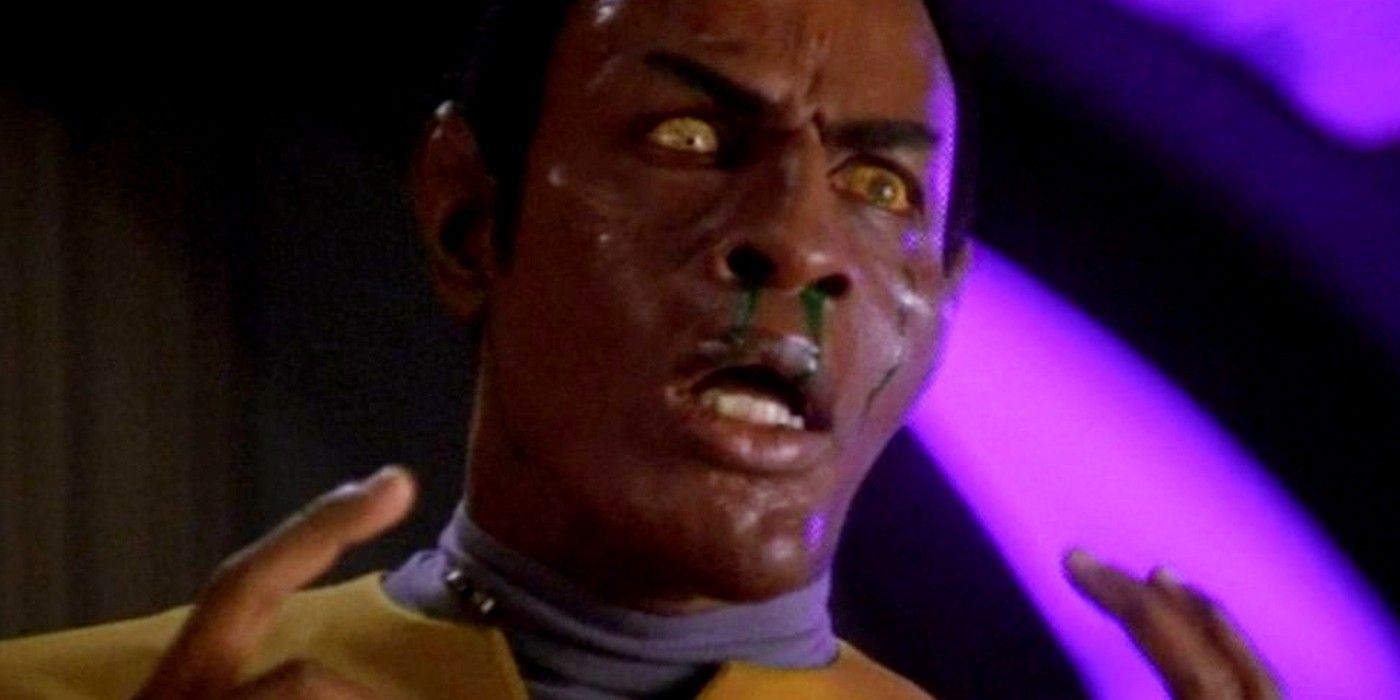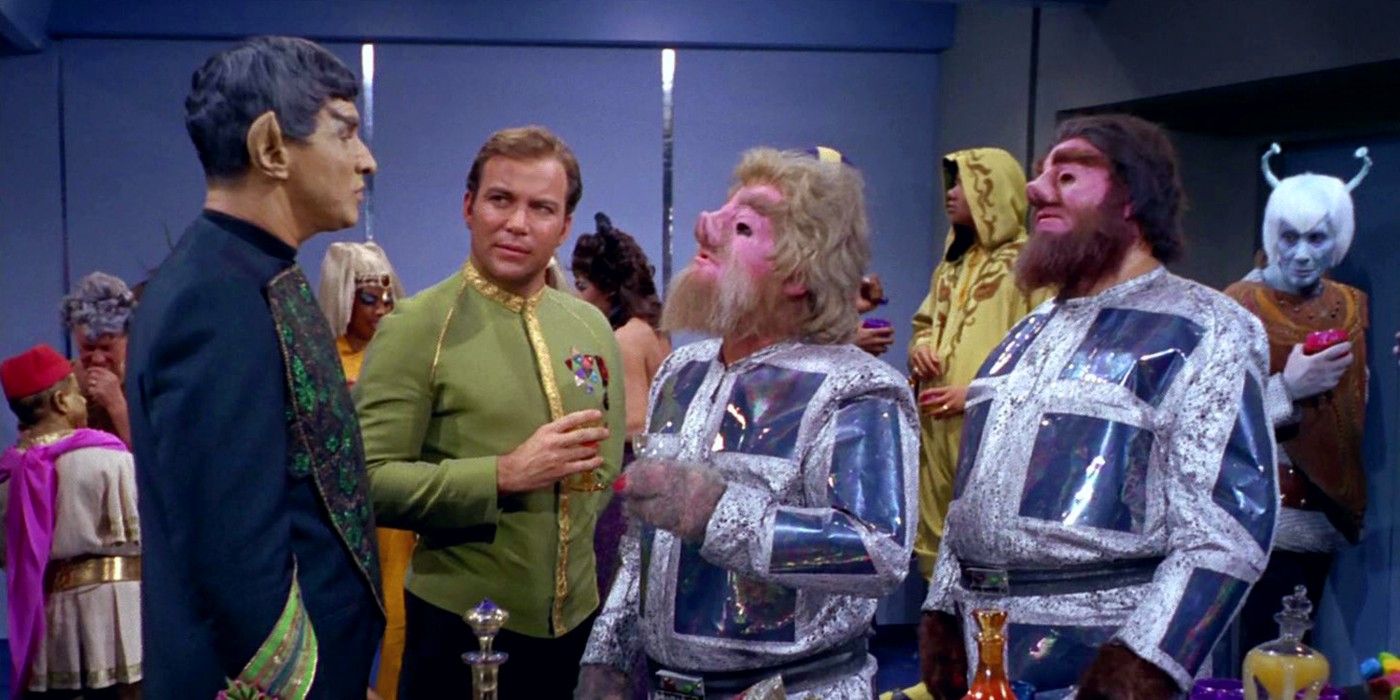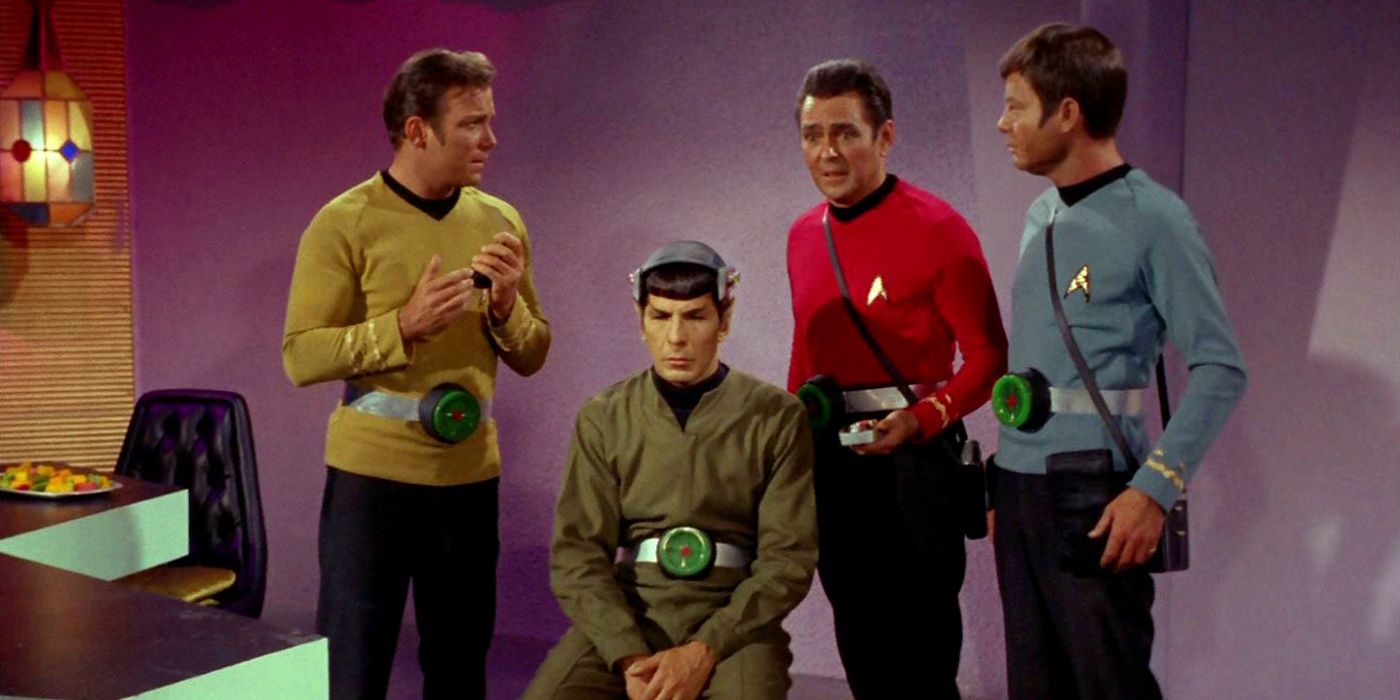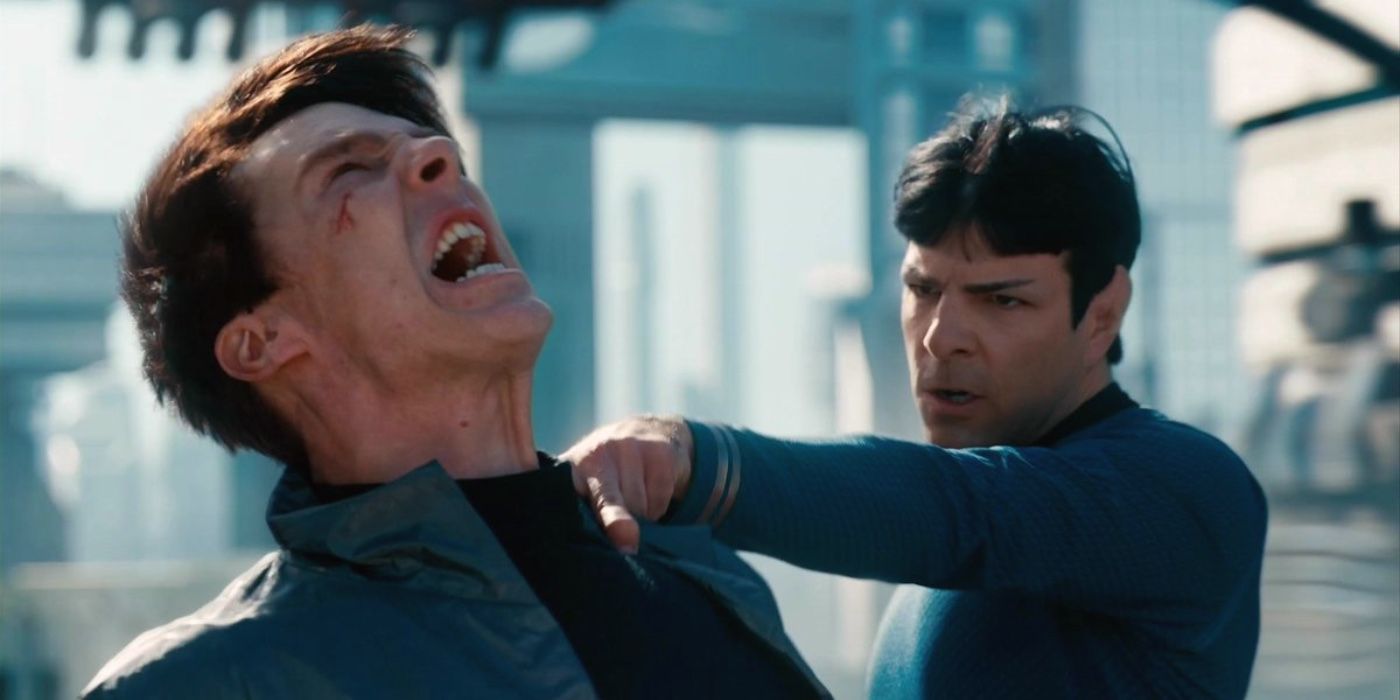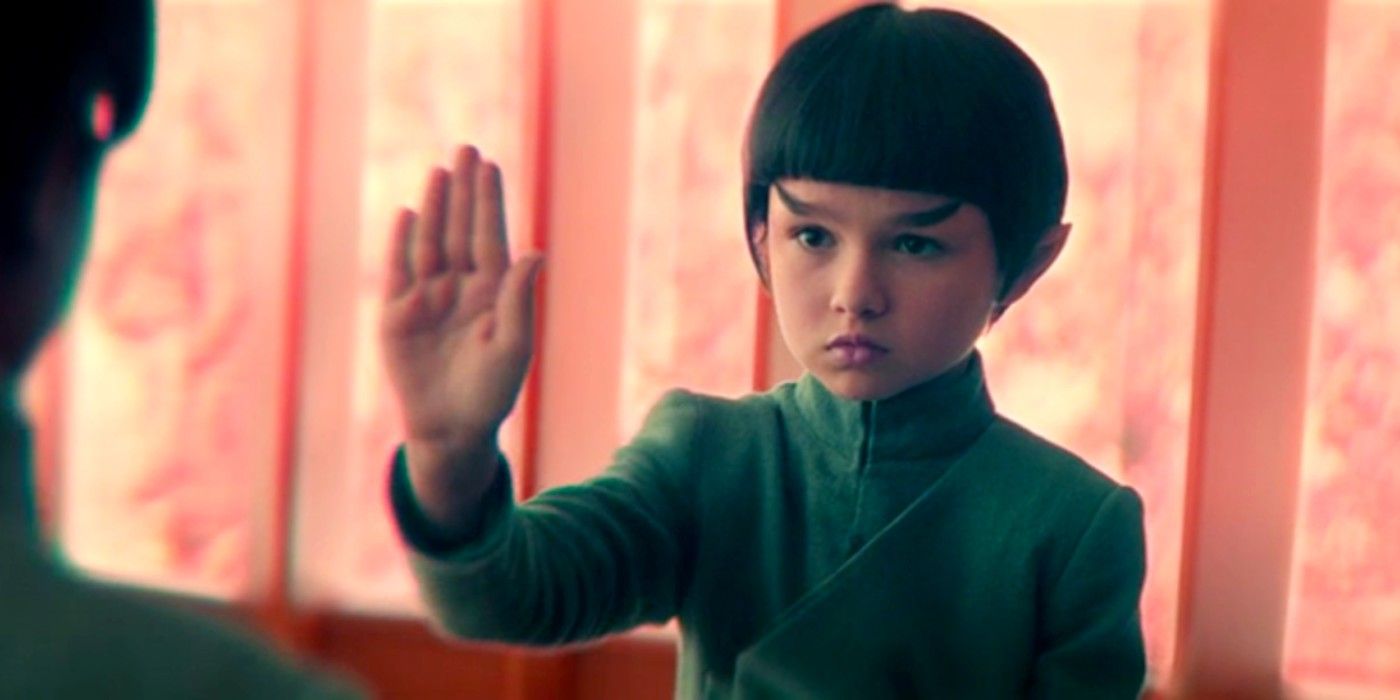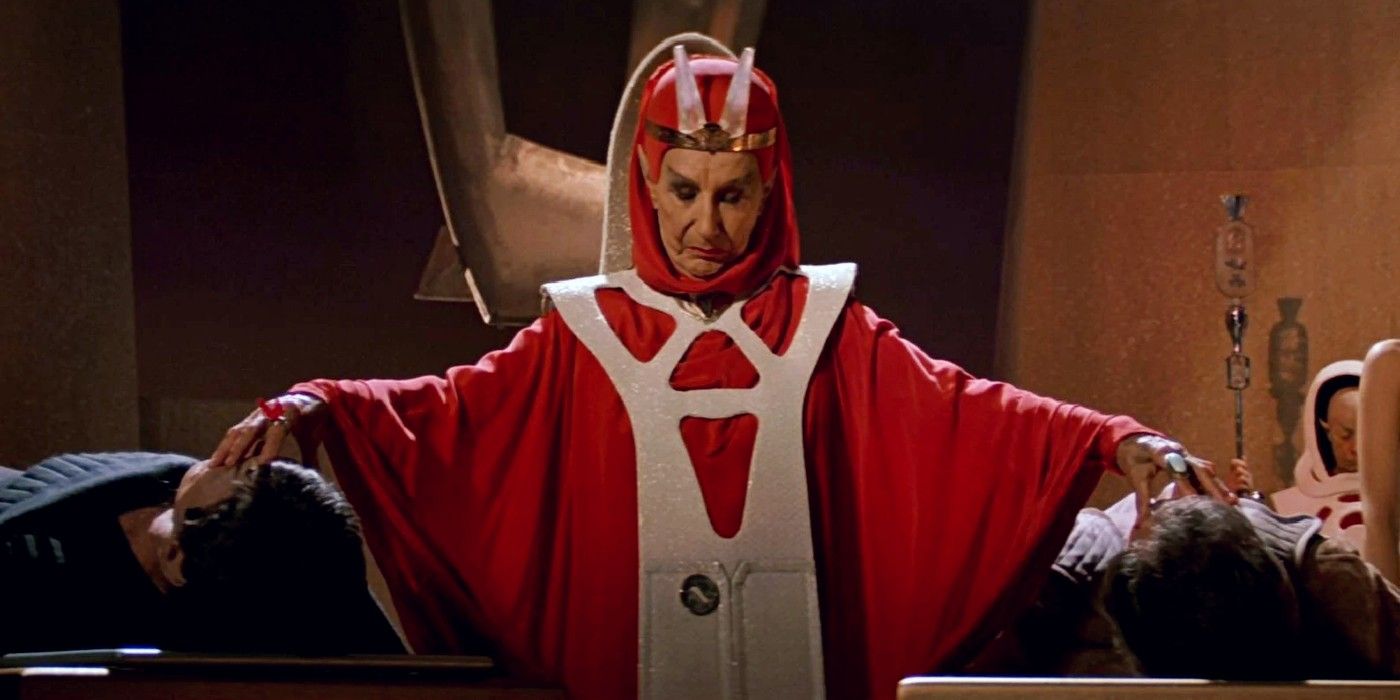Star Trek has over two hundred different alien species, and yet none is as iconic and representative of the franchise as the logical and peaceful Vulcans. The race originated with the character of Spock in The Original Series and has remained an intrinsic part of the sci-fi series, nearly sixty years since their debut.
While they've maintained their severe bowl cuts and unswept eyebrows over the years, the Vulcans have continued to evolve with Star Trek, providing fans with more information about one of Humanity's biggest allies.
10 They're Founding Members Of The United Federation Of Planets
As depicted in the 1996 film, First Contact, the Vulcans first revealed themselves in 2063 after detecting scientist Zefram Cochrane's first warp-capable vessel, Phoenix. They'd scouted the Sol System for other warp-capable beings for over a hundred years before finally approaching Humans with peaceful offers of knowledge and alliance.
Later on, Vulcans and Humans would ally with the Andorian Empire and Tellar to found the United Federation of Planets, an interstellar union based on furthering the four nations' development through mutually beneficial cooperation. The Vulcans would continue to be part of the Federation until the late 30th century, officially leaving in 3089.
9 Despite Their Pursue Of Logic, They Have A Very Turbulent Past
Before becoming the highly civilized, stoic society that fans know and love, Vulcans were a volatile species who solved most of their issues through intense battles to the death. They were far more emotional than humans, letting their instincts guide them into violent fits of rage that eventually thinned their planet's population.
This is when Surak and his philosophy based on logic and restraint come in. Seeing the rapid devastation of his people, Surak proposed an alternative path that spread to all corners of Vulcan, quickly gaining approval and leading a change in their ways. A few ancient rituals like the Kal-if-fee still retain the Vulcans' need for warfare and bloodshed.
8 Vulcans Share A Common Ancestry With Romulans
Romulans were first revealed in the Original Series episode "Balance of Terror," which is largely considered one of the show's best. Unlike Vulcans, Romulans are ruthless warriors with little patience for diplomacy and alliances. Their ancestors left Vulcan after Surak's victory, refusing to repress their emotions and establishing the Romulan Star Empire.
After isolating themselves and even attempting to damage the Federation on occasion, the Romulans ultimately reunite with their cousins and join them in Vulcan after their planet was destroyed. As a sign of good faith, Vulcan was renamed Ni'Var and became independent from the Federation.
7 Their Copper-Based Blood Has A Green Tint When Oxygenated
Despite sharing many similarities, Vulcan and human biologies have several key differences. Vulcan blood is mainly copper-based, giving light-skinned Vulcans a greenish tint to their skin. This also means that when exposed to oxygen, their blood takes on a bright green color as shown in the Voyager episode, "Cold Fire," when Tuvok starts bleeding.
Furthermore, the Vulcan heart is situated on the right side of the torso, in the same spot where the Human liver is located. In Beyond, Spock narrowly avoids being impaled in the heart by a piece of debris, prompting Dr. McCoy to mention this fact while providing assistance.
6 They're Vegetarians By Choice
Though originally omnivores, Vulcans have adopted a largely vegetarian lifestyle. For breakfast, Vulcans typically eat Plomeek soup, a plant-based broth that is said to taste bland to humans. In the fan-favorite episode "Amok Time," Christine Chapel prepares a bowl for an irrational Spock who is suffering from the effects of Pon Farr.
Vulcans also enjoy eating Gespar, a red fruit native to their planet that makes a brief appearance in the Enterprise episode, "Home," when T'Pol and Charles Tucker visit the first's mother, T'Les.
5 Their Bodies Can Continue To Function Without Their Brains
The Original Series episode, "Spock's Brain," introduced one of the weirdest, yet fascinating facts about Vulcan biology—they can apparently continue functioning without their brain. In the episode, a female alien surgically removes Spock's brain in order to power a machine, and to the rest of the Enterprise's surprise, Spock manages to walk around as if nothing were missing.
This absurd incident has never been revisited in any of the following series, but it remains one of the strangest additions to Vulcan lore. Not even Doctor McCoy saw it coming, and he's seen quite a few things while attending the Enterprise's reckless crew.
4 Vulcans Are Still Prone To A Few Diseases
Despite their heightened metabolism, Vulcans can still suffer from various diseases, most of them linked to their telepathy. In The Next Generation, Ambassador Sarek suffers from a degenerative illness called Bendii Syndrome, which leads him to lose control of his emotions and unconsciously project them to others with dangerous consequences.
After a poorly conducted mind-meld, Vulcans can be affected by Pa'nar Syndrome, a neural illness that affects other systems of the body. T'Pol suffered from the disorder for over a year before being cured in "Daedalus," a season four episode of Enterprise.
3 They're Master Martial Artists
Vulcans are famously pacifists, but they've been known to use weapons and violence when the situation demands it, usually as a last resort. Vulcan children grow up learning Suus Mahna, a martial art that uses the opponent's strength and movements to the user's advantage.
The Vulcan nerve pinch, as it's colloquially known in the show, is one of the most popular and effective Vulcan techniques. By applying pressure to the trapezius nerve, the user can easily immobilize the opponent and render them unconscious. The nerve pinch is known to be difficult for non-Vulcans to learn, with only a few exceptions like Captain Picard, Data, and Michael Burnham being able to do so.
2 Vulcan Children Must Pass A Maturity Test Called Kahs-wan
Vulcans start their journey toward absolute logic quite young. Aside from the initial mating bond that unites a young male and a young female for a future Pon Farr, children must also endure a grueling maturity test named the Kahs-wan. To successfully prove themselves, Vulcan adolescents must survive ten days in The Forge, the planet's largest and deadliest desert, without any sustenance or weapon.
The ritual was first introduced in the Animated Series episode, "Yesteryear," when Spock travels back in time to save his younger self from being killed by a le-matya, a large Vulcan animal. The Enterprise episode, "The Catwalk," also has T'Pol liken the test to her first camping experience.
1 Their Essence Is Captured In Their Katra
A deeply spiritual race, Vulcans believed every member of their species had a Katra—the physical manifestation of someone's consciousness. According to Vulcan belief, Katras could survive well after the body's demise and could be transferred to another living being through a mind-meld.
After Spock's death in The Wrath of Khan, his Katra was trapped within Doctor McCoy's mind until it could be retransferred to his regenerated body via the Fal-Tor-Pan ritual in The Search for Spock. Years earlier, Ambassador Sarek shared his consciousness with Michael Burnham in Discovery and was also able to communicate with her through their link.

